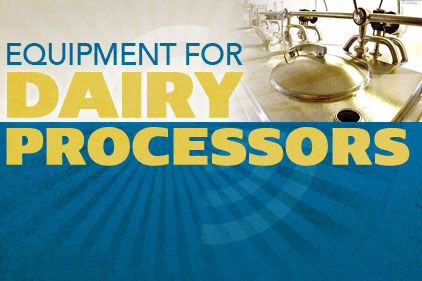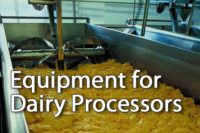3-A SSI currently maintains over 80 individual 3-A Sanitary Standards and 3-A Accepted Practices that were developed primarily for dairy processing equipment and systems. Through many decades of oversight, 3-A SSI has worked hard to maintain consistency and uniformity in the organization and terminology found employed in these important documents.
We just took a major step forward in improving the content of these standards as they are employed across the dairy industry; many other segments of the food processing industry stand to realize significant new benefits.
3-A SSI recently announced the release of “ANSI/3-A 00-00-2014, 3-A Sanitary Standards for General Requirements.” The new General Requirements Standard was approved by American National Standards Institute as an American National Standard on Sept. 8. The General Requirements Standard is a valuable reference for the entire range of food and beverage industries, where many upgrades in hygienic equipment design are expected for the prevention of food-borne illness.
In addition, the General Requirements Standard will provide benchmark hygienic design criteria to help meet the requirements and objectives of third-party auditing schemes under the Global Food Safety Initiatives (GFSI) and regulatory programs under the FDA Food Safety Modernization Act (FSMA). The General Requirements Standard is available for use on a voluntary basis as a normative reference.
The new standard covers the sanitary design, materials of construction and fabrication techniques for dairy and for other food and beverage equipment used to handle, process and package consumable products where a high degree of sanitation is required.
Extensive work lies ahead for 3-A SSI to transition all current 3-A Sanitary Standards and Accepted Practices to a revised format whereby the General Requirements will serve as a normative reference for all 3-A SSI documents. 3-A SSI Working Groups have met over the past month and have identified and begun working on revising several individual standards. When a draft document is ready, there will be announcements made about how to participate in a draft review. Current standards projects underway are maintained on the 3-A SSI website at: http://www.3-a.org/Standards/Forms/Status-Report.pdf
Easier-to-manage documents
With the majority of common definitions and fabrication criteria now in one location, upkeep of this General Requirements Standard and the common design criteria within it will be vastly easier to manage. 3-A Sanitary Standards and 3-A Accepted Practices are now freed up to focus on only those specific criteria unique to that specific type of processing equipment. The new system of maintaining 3-A SSI documents will gain from the improved uniformity and assurance that all hygienic criteria are aligned across the entire spectrum of documents despite individual standards development cycles. A short background on how this Standard came into our lives is worth noting.
Over eight years ago, 3-A SSI volunteer leaders recognized the benefits of compiling the complex technical criteria that were vetted through the 3-A SSI consensus process to serve all developers of 3-A SSI documents. Other support information for Document Leaders and Working Group Members became organized in a document known as the Format & Style Manual.
The Manual provided a compendium of numerous “format and style” conventions used to construct 3-A Sanitary Standards and 3-A Accepted Practices. The Manual addressed format, meaning the generally accepted way of organizing and putting a standard together, as well as style, or the mode and form of expression as distinguished from the content. For example, for a “required” or “must” item, the term “shall” is used. The word “may” or “should” indicates it is an option. A consistent style helps to accurately impart the desired meaning to the reader and, therefore, less likely to be misconstrued.
Out of this original concept grew a need to include common definitions and other frequently referenced sanitary concepts found throughout virtually all 3-A Sanitary Standards and 3-A Accepted Practices. The refinement of these definitions and a history of common interpretation helped establish better uniformity for terms that previously appeared in many variations and levels of understanding.
So why should the refinement of such terms and conventions found in these “technical” documents really matter to the user for the purpose of specifying or purchasing equipment? The historic approach of 3-A SSI has favored true standards vs. guidelines, where more conditional terminology may be employed or the specification of performance goals. Both approaches have merits, but the standards approach provides all users the central benefit of more objective, verifiable criteria for equipment evaluation. Where the safety of food matters, so does the integrity of hygienic design criteria.
The new General Requirements Standard is available from 3-A SSI at the Standards & Accepted Practices Store on www.3-a.org


